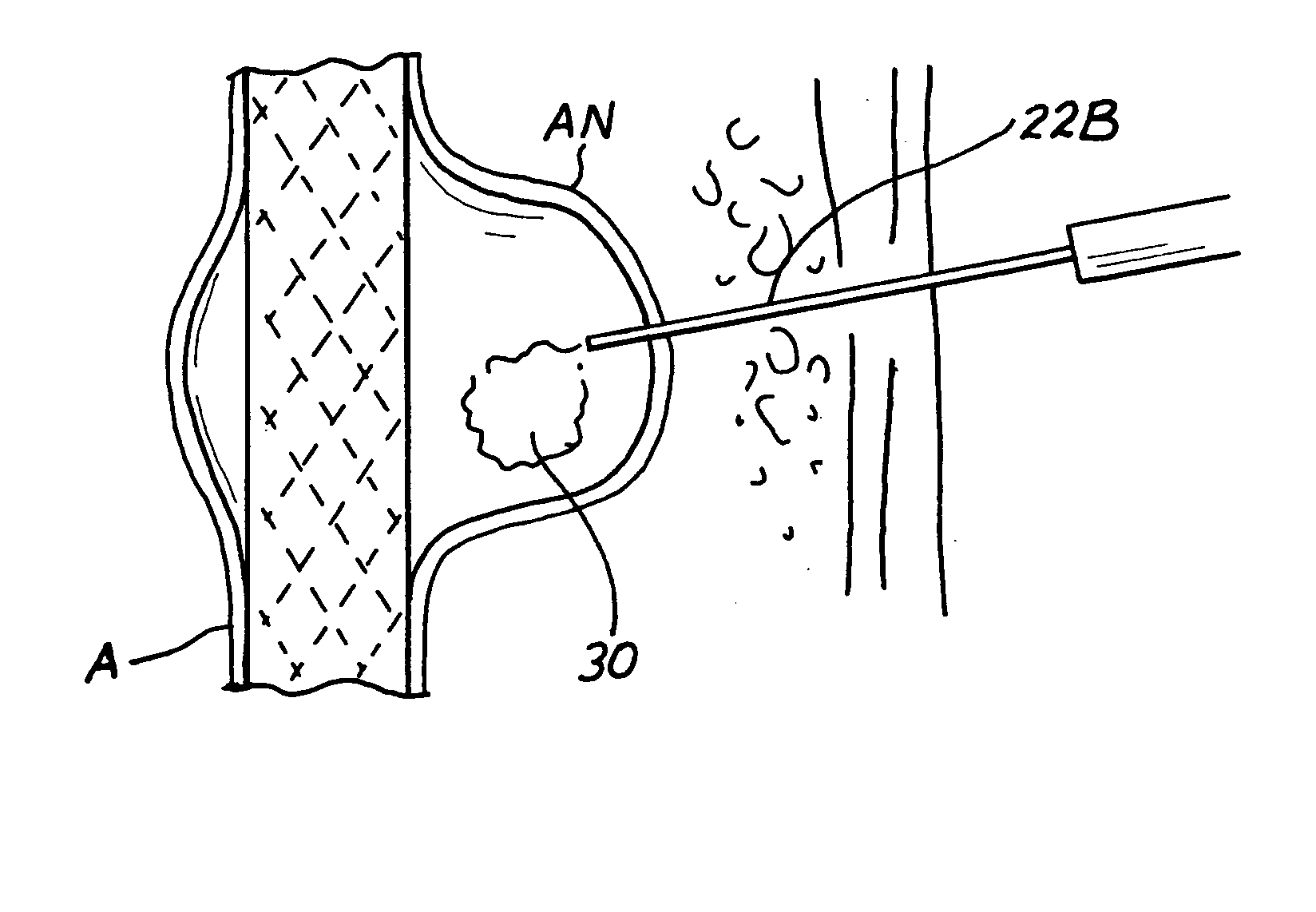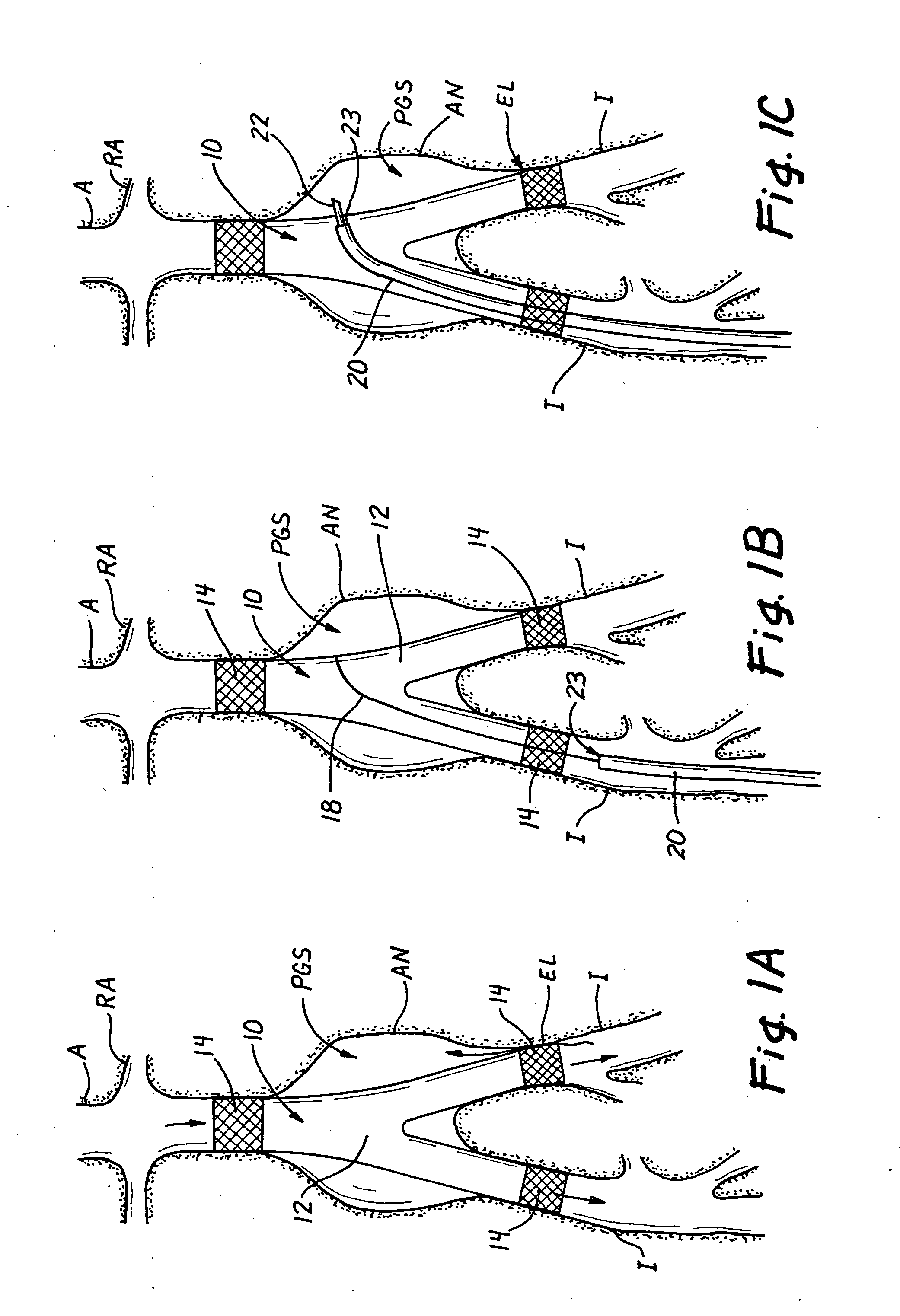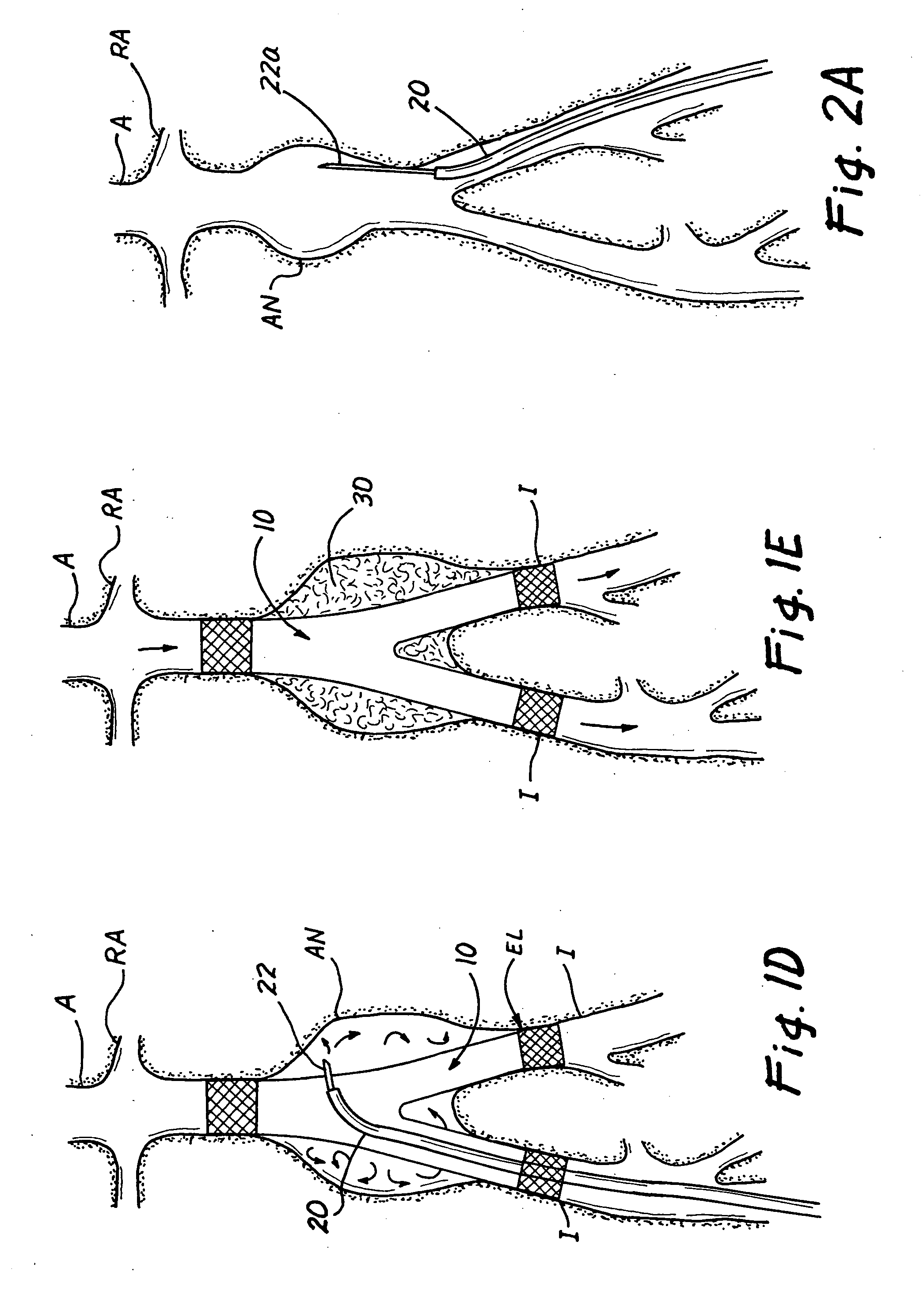Methods, materials and apparatus for deterring or preventing endoleaks following endovascular graft implantation
a technology of endovascular graft and endovascular artery, which is applied in the field of biomedical methods, materials and equipment, can solve the problems of rapid hemorrhage and death if not promptly treated, weakened blood vessel areas, and aneurysms of the aorta
- Summary
- Abstract
- Description
- Claims
- Application Information
AI Technical Summary
Benefits of technology
Problems solved by technology
Method used
Image
Examples
Embodiment Construction
[0047] The following detailed description and examples are provided for the limited purpose of illustrating exemplary embodiments of the invention and not for the purpose of exhaustively describing all possible embodiments of the invention.
[0048] Methods for Treating or Preventing Endoleaks
[0049]FIGS. 1A through 1E show one example of a method for treating an endoleak that has occurred in a bifurcated aorto-illiac endovascular graft 10 that has been implanted in a human patient to treat an abdominal aortic aneurysm AN that involved the infrarenal aorta A and portions of the illiac arteries I. In this example, the endoleak has resulted from less than adequate coaptation or sealing between the graft anchoring device 14 at the end of one of the bifurcated legs of the endovascular graft 10 and the wall of the patient's left iliac artery I. Initially, as shown in FIG. 1B, a guidewire 18 is inserted into the patient's right femoral artery and the guidewire 18 is advanced, using well kno...
PUM
 Login to View More
Login to View More Abstract
Description
Claims
Application Information
 Login to View More
Login to View More - R&D
- Intellectual Property
- Life Sciences
- Materials
- Tech Scout
- Unparalleled Data Quality
- Higher Quality Content
- 60% Fewer Hallucinations
Browse by: Latest US Patents, China's latest patents, Technical Efficacy Thesaurus, Application Domain, Technology Topic, Popular Technical Reports.
© 2025 PatSnap. All rights reserved.Legal|Privacy policy|Modern Slavery Act Transparency Statement|Sitemap|About US| Contact US: help@patsnap.com



